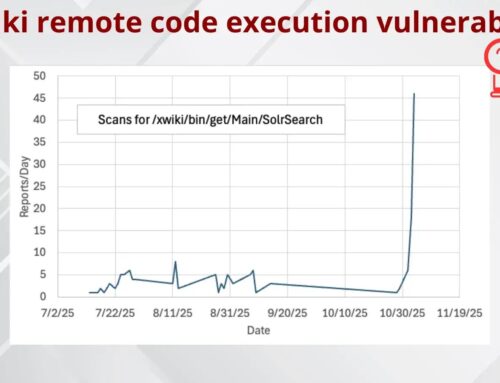
New Android Spyware Disguised as an Antivirus Attacking Business Executives
Urgent Warning: New Android Spyware “GuardCB” Targets Business Executives Masquerading as Antivirus
In recent months, security teams have observed the emergence of a highly versatile Android backdoor, identified as Android.Backdoor.916.origin. This sophisticated threat is noteworthy for its deceptive nature, as it masquerades as a legitimate antivirus application and is specifically targeting business executives. The implications of such a breach can be severe, ranging from sensitive data exfiltration to complete device compromise. Understanding the delivery mechanism, its deceptive tactics, and the necessary countermeasures is crucial for any organization or individual handling proprietary information on Android devices.
The Deceptive Disguise: “GuardCB” and Its Distribution
The Android.Backdoor.916.origin malware is being distributed primarily through private messaging services, under the guise of an application named “GuardCB.” Its icon prominently features a shield background with an emblem strikingly similar to that of the Central Bank of the Russian Federation. This resemblance is a deliberate social engineering tactic, designed to create an illusion of legitimacy and trustworthiness, particularly among targets who might be familiar with or operate within financial sectors or regions where such an emblem holds sway. Despite its convincing visual presentation, the “antivirus” interface itself displays only superficial elements, providing no actual functionality, which is a key indicator of its malicious intent.
Technical Analysis of Android.Backdoor.916.origin
While the initial interface of “GuardCB” appears benign, the underlying malicious payload, Android.Backdoor.916.origin, is far from it. This backdoor exhibits high versatility, enabling attackers to perform a range of intrusive actions once installed. Although specific CVEs related to this particular backdoor have not been publicly disclosed, its operational characteristics suggest exploitation of common Android vulnerabilities or reliance on extensive user permissions. This allows the attacker to gain unauthorized access to critical device functions and data. The primary objective is likely intelligence gathering, financial fraud, or corporate espionage, making business executives prime targets due to their access to sensitive organizational data and networks.
Risks and Impact on Business Executives
The compromise of an executive’s device via Android.Backdoor.916.origin poses significant risks:
- Data Exfiltration: Sensitive corporate documents, emails, contact lists, and personal information can be stolen.
- Espionage: Microphones and cameras can be remotely activated, enabling audio and video surveillance.
- Financial Fraud: Banking credentials, credit card details, and access to financial applications can be compromised.
- Network Infiltration: A compromised executive device can serve as a pivot point for attackers to gain access to corporate networks.
- Reputational Damage: Data breaches linked to executive devices can severely damage a company’s reputation and trust.
The private messaging distribution method further complicates detection, as these channels often bypass traditional email filtering and content security solutions, relying on the user’s trust and curiosity.
Remediation Actions and Best Practices
Mitigating the threat posed by Android.Backdoor.916.origin and similar sophisticated Android malware requires a multi-layered approach involving both technical controls and user education. Here are key remediation actions:
- Exercise Extreme Caution with Unsolicited Apps: Never install applications from unverified sources, especially those received via private messages, even if they appear to be from trusted entities. Prioritize app downloads from official stores like Google Play.
- Verify App Authenticity: Before installation, always cross-reference app details (developer, permissions, reviews) with official sources. For “GuardCB,” its lack of actual functionality should raise immediate red flags.
- Strictly Limit Sideloading: Discourage or prohibit the installation of applications from “Unknown Sources” in Android settings for executive devices, and ideally for all corporate devices.
- Regular Security Audits: Implement regular security audits and penetration testing for mobile devices used by executives to identify potential vulnerabilities and unauthorized installations.
- Implement Mobile Device Management (MDM): Utilize MDM solutions to enforce security policies, remotely wipe devices, manage app installations, and monitor device health.
- Enhanced Endpoint Detection and Response (EDR): Deploy advanced EDR solutions on all mobile devices to detect suspicious activities, malicious processes, and unauthorized data access in real-time.
- User Education and Awareness: Conduct regular cybersecurity awareness training specifically for executives, focusing on social engineering tactics, phishing, and the dangers of sideloaded applications.
- Monitor Network Traffic for Anomalies: Implement network traffic monitoring to detect unusual outbound connections from mobile devices, which could indicate data exfiltration or command-and-control communication.
- Isolate Compromised Devices: If a device is suspected of being compromised, immediately isolate it from corporate networks and resources to prevent further infection or data breach.
- Regular Software Updates: Ensure that all Android devices are running the latest operating system and security patches to protect against known vulnerabilities.
Relevant Tools for Detection and Mitigation
| Tool Name | Purpose | Link |
|---|---|---|
| Mobile Device Management (MDM) Solutions (e.g., Microsoft Intune, VMware Workspace ONE) | Centralized management, policy enforcement, app control, and remote wiping for mobile devices. | Microsoft Intune, VMware Workspace ONE |
| Endpoint Detection and Response (EDR) for Mobile (e.g., CrowdStrike Falcon for Mobile, SentinelOne Singularity Mobile) | Real-time threat detection, incident response, and forensic capabilities on mobile endpoints. | CrowdStrike Falcon for Mobile, SentinelOne Singularity Mobile |
| Mobile Threat Defense (MTD) Solutions (e.g., Zimperium, Check Point Harmony Mobile) | Specialized mobile security solutions protecting against device, network, and application-layer threats. | Zimperium, Check Point Harmony Mobile |
| Android Debug Bridge (ADB) | Developer tool for interacting with Android devices. Useful for extracting apps and performing manual analysis in a controlled environment. | Android ADB |
Key Takeaways for Enhanced Mobile Security
The emergence of Android.Backdoor.916.origin underscores the evolving threat landscape targeting mobile devices, particularly those of high-value individuals like business executives. The deceptive use of a familiar-looking icon and distribution via private messaging channels highlights the reliance on social engineering tactics. Organizations must prioritize robust mobile device security strategies, combining cutting-edge technical controls with continuous awareness training. Proactive vigilance against unsolicited applications and maintaining strict adherence to security best practices are paramount in protecting sensitive corporate information and preventing costly breaches.





